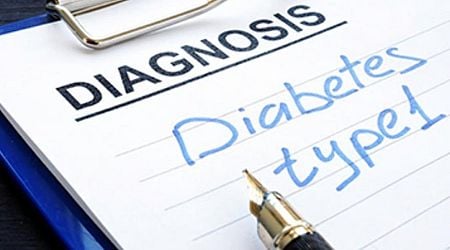Exploring the Diverse Landscape of Opioid Addiction Treatment
Opioid addiction has become a global public health crisis with devastating consequences for individuals, families, and communities. Each year, 3.8% of American adults engage in opioid abuse, which equates to more than 10 million individuals. The powe

Opioid addiction has become a global public health crisis with devastating consequences for individuals, families, and communities. Each year, 3.8% of American adults engage in opioid abuse, which equates to more than 10 million individuals. The powerful grip of these drugs often leaves those struggling feeling trapped in a cycle of dependence and despair.
Thankfully, the landscape of opioid addiction treatment is no longer a barren wasteland. This article will explore diverse treatment options, providing hope and guidance for those on the path to recovery.
Traditional Treatment Approaches
For years, behavioral therapies have been fundamental to addiction treatment. Cognitive-behavioral therapy (CBT) and motivational interviewing (MI) provide individuals with essential skills. CBT helps patients recognize triggers, manage cravings, and build coping skills, while motivational interviewing aims to boost their intrinsic motivation.
A study found that 30.6% of people in the control group were abstinent from opioids after six months. In comparison, 40.2% of those who had a 20-minute motivational interview achieved abstinence. This suggests that motivational interviewing may enhance abstinence rates. However, additional research is needed to assess better its effectiveness in treating opioid use disorder (OUD).
Another traditional approach is detoxification, a medically supervised process to wean individuals off opioids. However, detoxification by itself isn’t efficient for long-term recovery, and relapse rates tend to be high without additional treatment. Traditional approaches stress comprehensive care, blending medical treatment with psychological support to tackle the complex nature of addiction effectively.
Medication-Assisted Treatment (MAT)
Medication-assisted treatment (MAT) has become a leading approach for opioid addiction, integrating medications with behavioral therapies to provide a comprehensive solution. It uses FDA-approved drugs like buprenorphine (Suboxone), methadone, and naltrexone to manage withdrawal, reduce cravings, and support recovery.
These medications normalize brain chemistry, block opioid highs, and ease cravings, allowing individuals to better engage in therapy.
Suboxone contains both naloxone and buprenorphine to prevent misuse. Buprenorphine, a partial opioid agonist, helps manage withdrawal symptoms without producing intense euphoria. Naloxone, an opioid antagonist, discourages misuse by inducing withdrawal symptoms if the medication is injected.
MAT significantly improves patient outcomes, including reducing the risk of fatal overdose by half. Studies also show it increases retention in treatment programs. However, despite its advantages, some individuals may face side effects or complications from medications such as Suboxone.
Suboxone complications have led to lawsuits, with plaintiffs claiming manufacturers failed to adequately warn users and medical professionals about risks. They argue that this lack of warning led to harm caused by the medication’s side effects. Consequently, they are pursuing compensation for the harm caused by these side effects.
Despite manufacturers adding warning labels to Suboxone, some people still face adverse effects. This ongoing issue raises questions such as “Can I still apply for the Suboxone lawsuit?” Those affected may still have grounds for legal action depending on their circumstances and the timing of their claims.
TruLaw reports that the US Judicial Panel on Multidistrict Litigation is evaluating whether to consolidate Suboxone tooth decay claims, which are currently filed in the Northern District of Ohio. The panel’s decision could streamline legal proceedings for affected individuals.
Holistic and Complementary Therapies
Holistic and complementary therapies are gaining recognition in opioid addiction treatment, addressing the body, mind, and spirit. These approaches, including yoga, acupuncture, meditation, and art therapy, aim to reduce stress and enhance emotional and physical well-being. Yoga and meditation regulate stress hormones, reduce anxiety, and improve mental health, fostering a supportive environment for recovery.
WVU research shows that mindfulness, or focusing on the present, can improve substance use treatment, especially for lonely individuals. The study found that mindfulness enhances patients’ awareness of drug use triggers and other stimuli, improving their control over outcomes. The findings suggest mindfulness-based relapse prevention (MBRP) could become a standard treatment option alongside pharmacological interventions.
Additionally, acupuncture alleviates withdrawal symptoms and reduces cravings by stimulating body points to release endorphins and other neurotransmitters.
In what ways do holistic therapies enhance traditional methods of addiction treatment?
Holistic therapies complement traditional addiction treatment by focusing on the emotional, physical, and spiritual facets of recovery. Techniques like yoga, meditation, and acupuncture alleviate stress and boost well-being. This holistic approach enhances medical treatments and counseling, resulting in a more thorough and individualized recovery process.
Innovative and Emerging Treatments
Innovative and emerging treatments are transforming the landscape of opioid addiction therapy, offering new hope through cutting-edge approaches. A promising development is digital therapeutics, including smartphone apps and virtual reality programs. These technologies can be accessed anytime and offer interactive, personalized support and cognitive behavioral therapy (CBT) tools. They also offer real-time assistance and tracking progress.
Another groundbreaking approach is deep brain stimulation (DBS), which implants electrodes to regulate brain activity and reduce cravings and withdrawal symptoms. Genetic testing is also being explored to tailor treatments based on an individual’s genetic makeup. This personalization could increase medication efficacy and reduce adverse effects.
How does telehealth contribute to contemporary addiction treatment?
Telehealth plays a crucial role in modern addiction treatment by providing remote access to counseling, medical consultations, and support services. It enhances convenience, reduces barriers to care, and ensures continuity of treatment, especially for those in rural or underserved areas.
Community and Social Support Systems
Community and social support systems are vital components of opioid addiction treatment, offering essential emotional and practical assistance. Support groups like Narcotics Anonymous (NA) and SMART Recovery provide peer-led spaces for sharing experiences, gaining encouragement, and fostering belonging.
Family therapy and community programs repair relationships, educate loved ones about addiction and create a supportive home environment. These networks foster accountability and resilience, which are vital to sustaining recovery.
In what ways can families assist their loved ones during recovery?
Families support recovery by providing emotional encouragement, joining family therapy, learning about addiction, and creating a stable, supportive home environment. Active involvement, understanding triggers, and maintaining open, non-judgmental communication are essential for fostering a positive, enduring recovery process.
Legal and Policy Considerations
The legal and policy landscape surrounding opioid addiction treatment continues to evolve. Although progress has been made in expanding access to evidence-based treatment options, some challenges persist.
One key area of focus is reducing the stigma associated with addiction. Studies show that stigma can be a significant barrier to seeking treatment. Policy efforts aim to increase public awareness and education about addiction as a medical condition, fostering a more compassionate and understanding environment.
Another ongoing discussion centers around expanding access to medication-assisted treatment (MAT). While MAT has proven highly effective, regulations around prescribing certain medications, like buprenorphine, have sometimes limited availability. Policies are being explored to increase the number of qualified healthcare providers who can prescribe MAT medications.
Navigating the Path to Recovery
As the opioid epidemic persists, addiction treatment is evolving with diverse strategies to support those in need. Integrating these varied approaches can enhance recovery outcomes and offer hope to affected individuals and families. Embracing a multifaceted treatment strategy enables us to navigate the path to recovery, aiming for effective and compassionate addiction management.
The post Exploring the Diverse Landscape of Opioid Addiction Treatment appeared first on Prague Post.


































